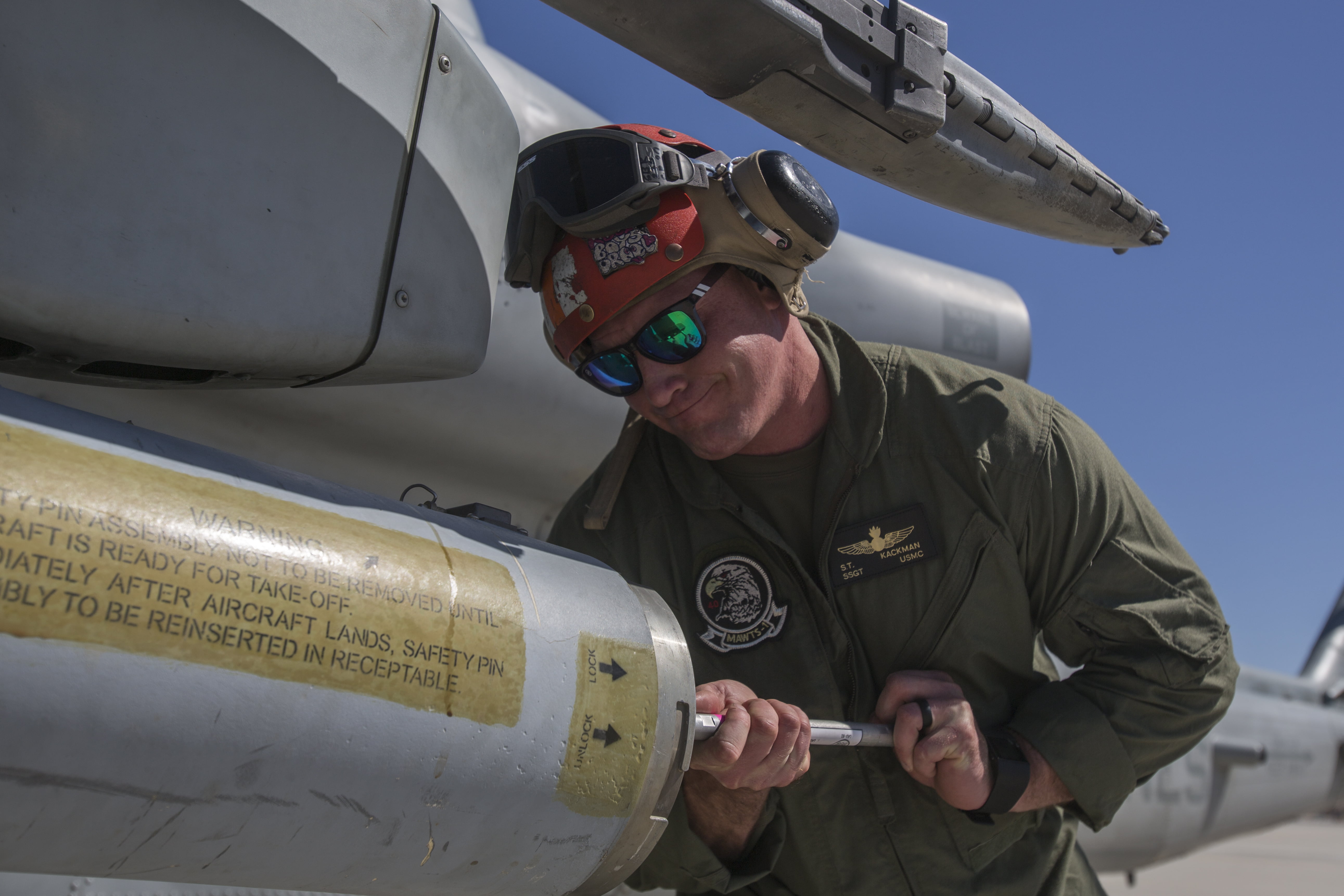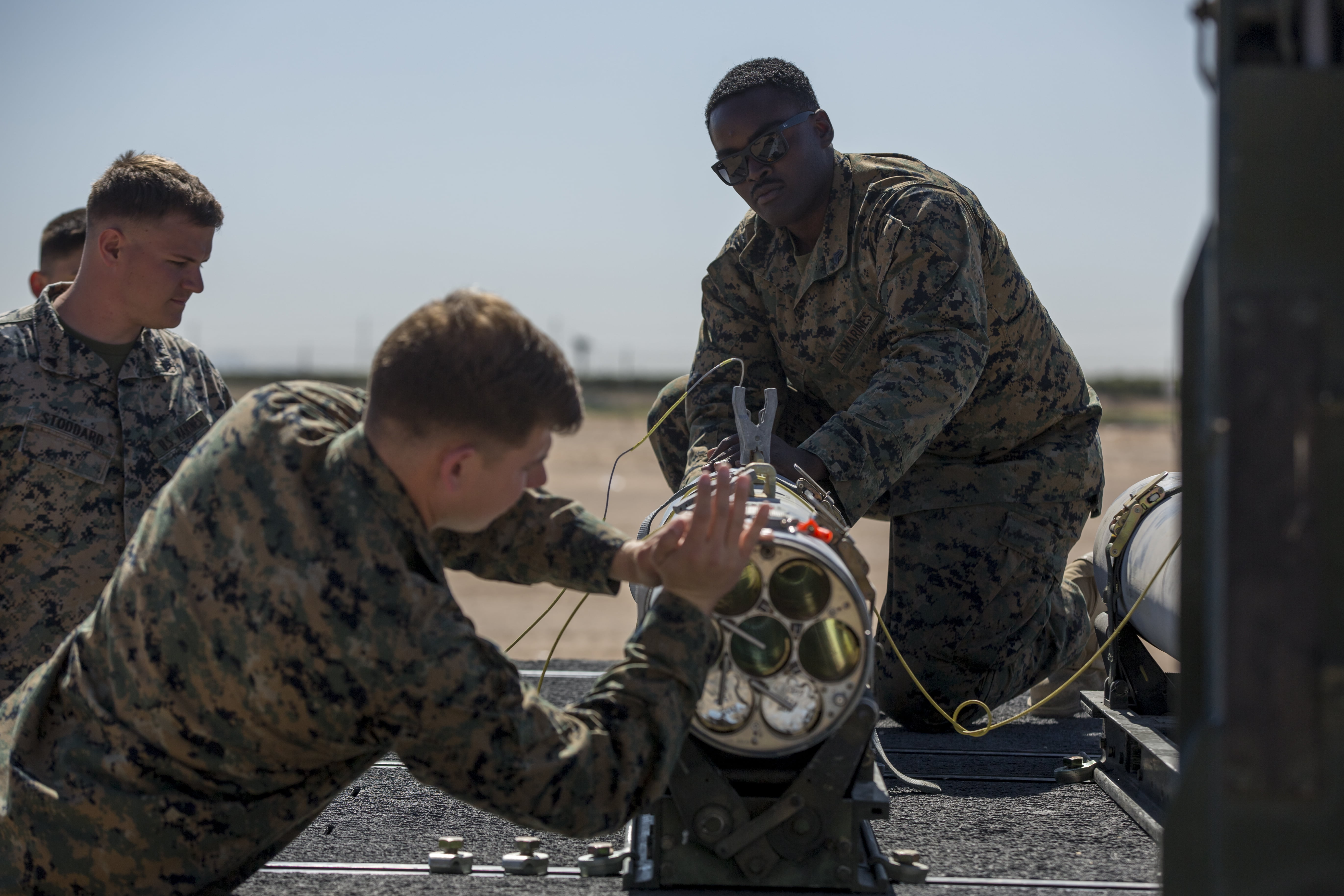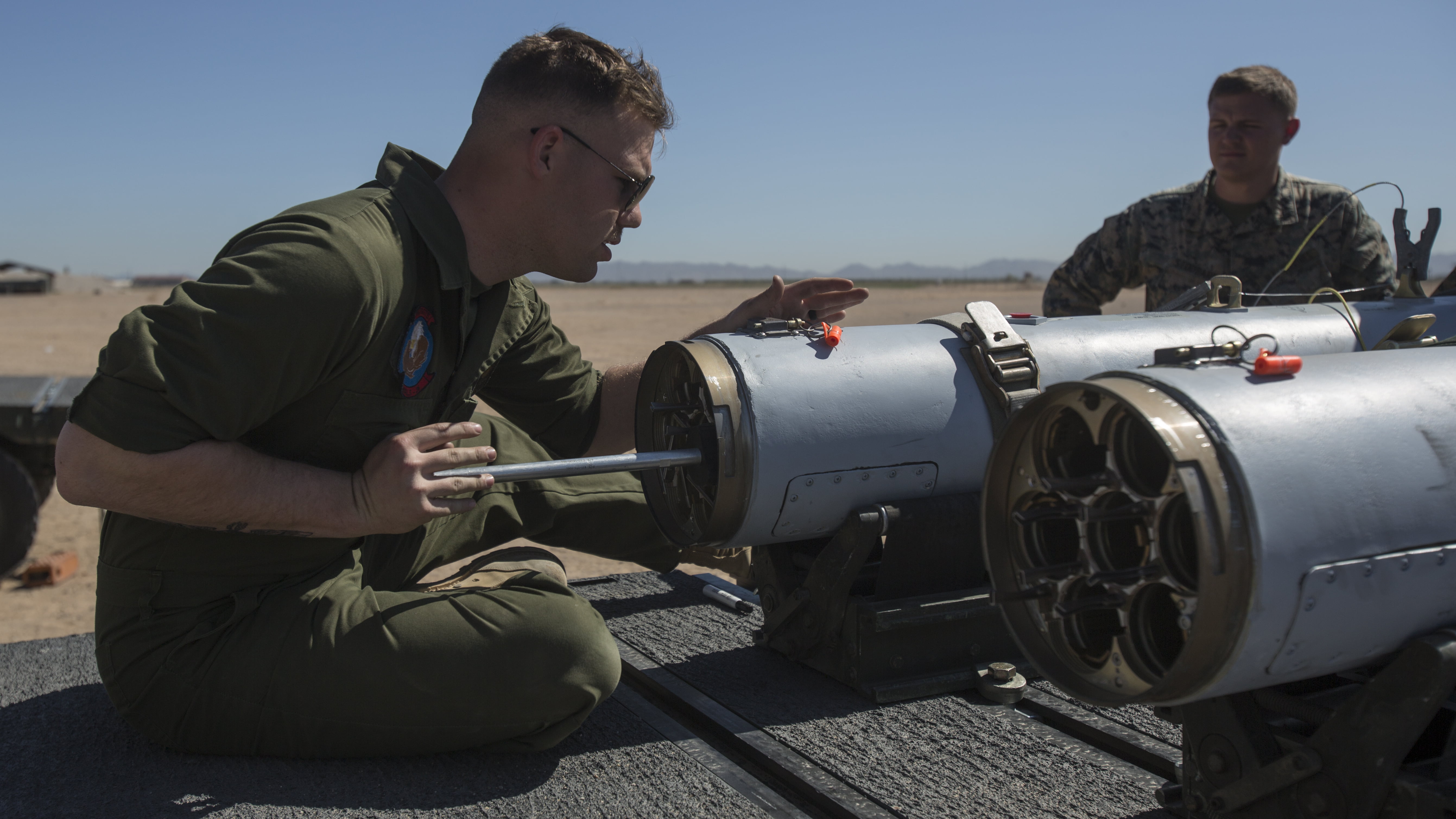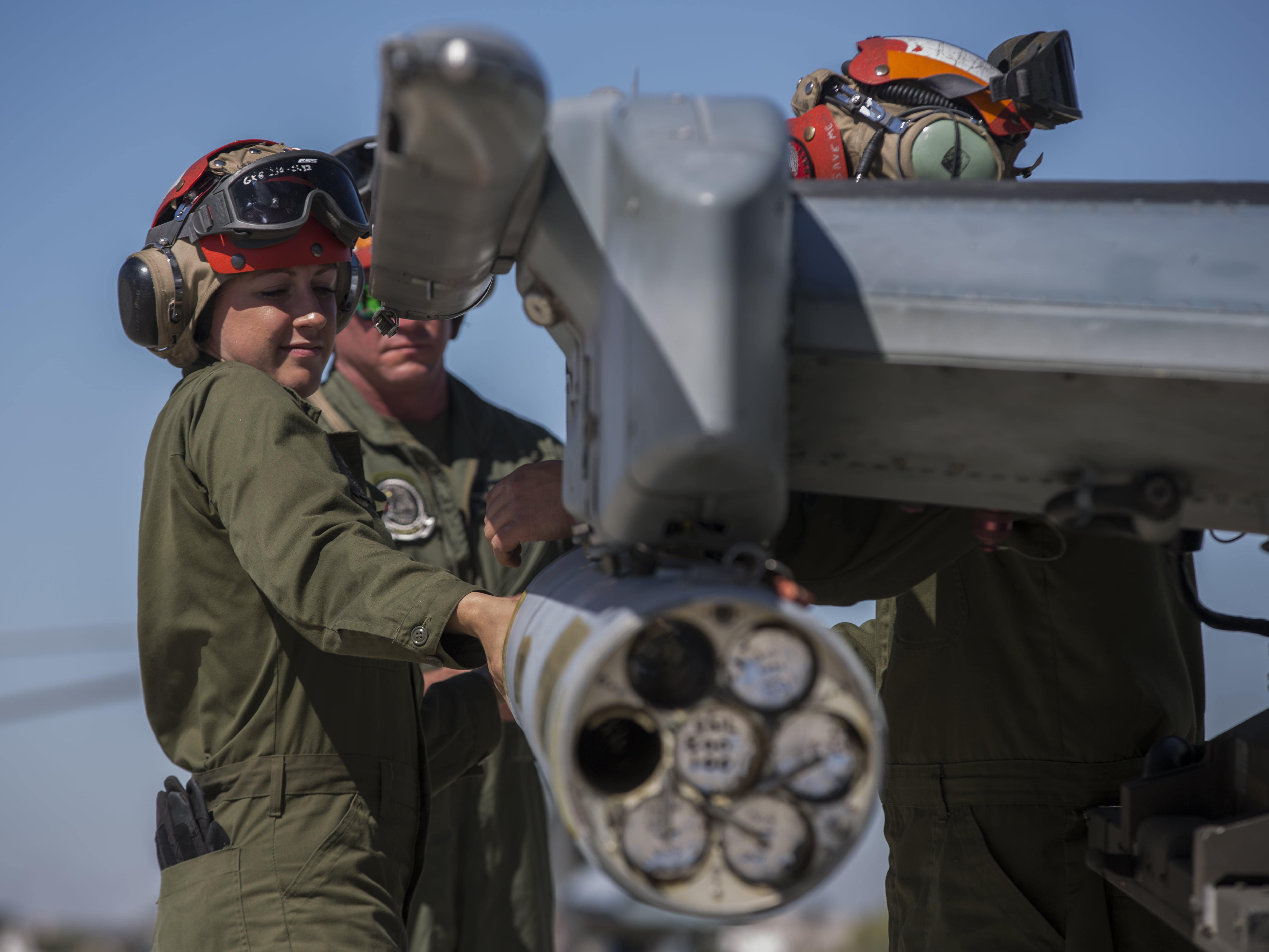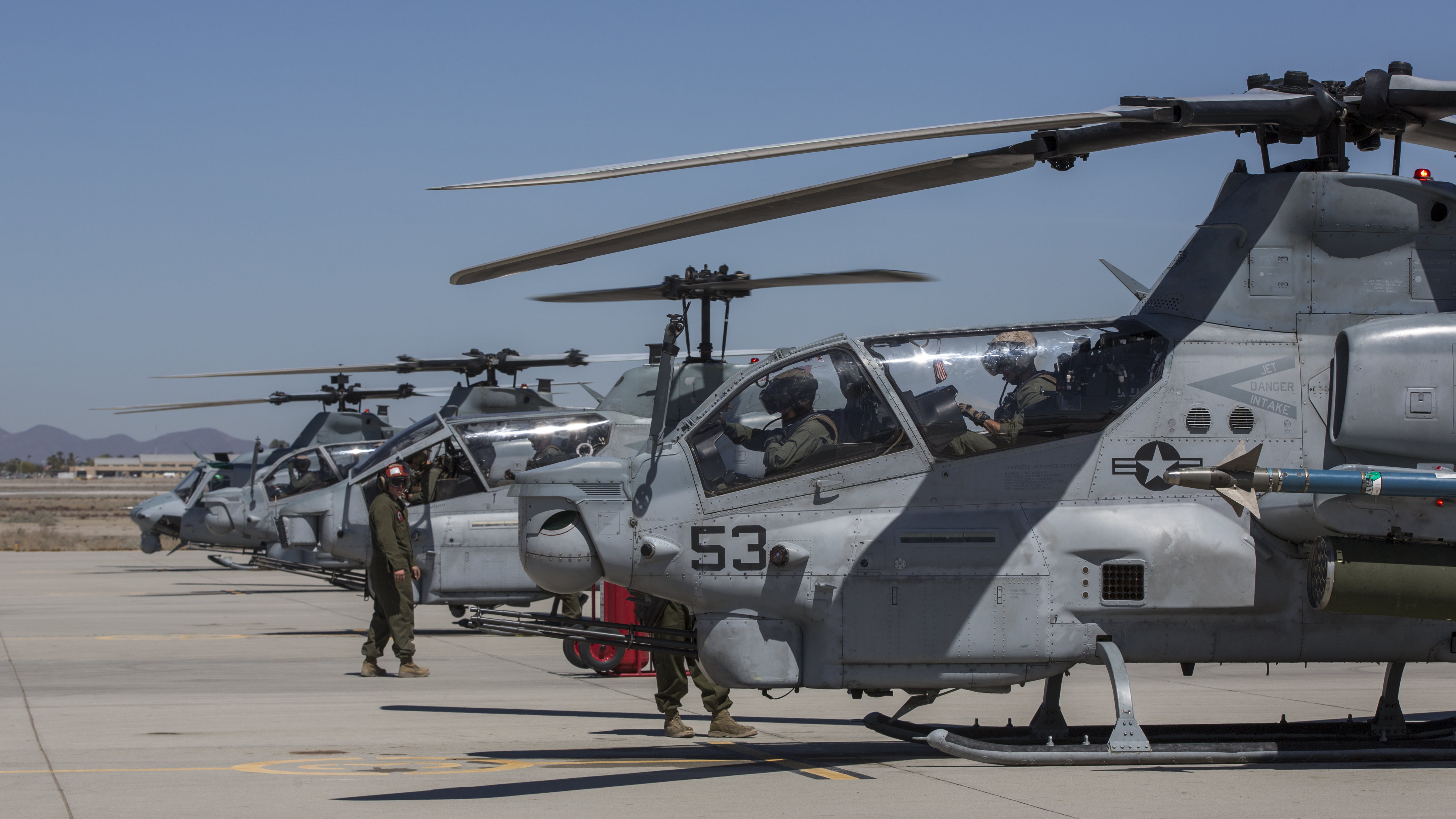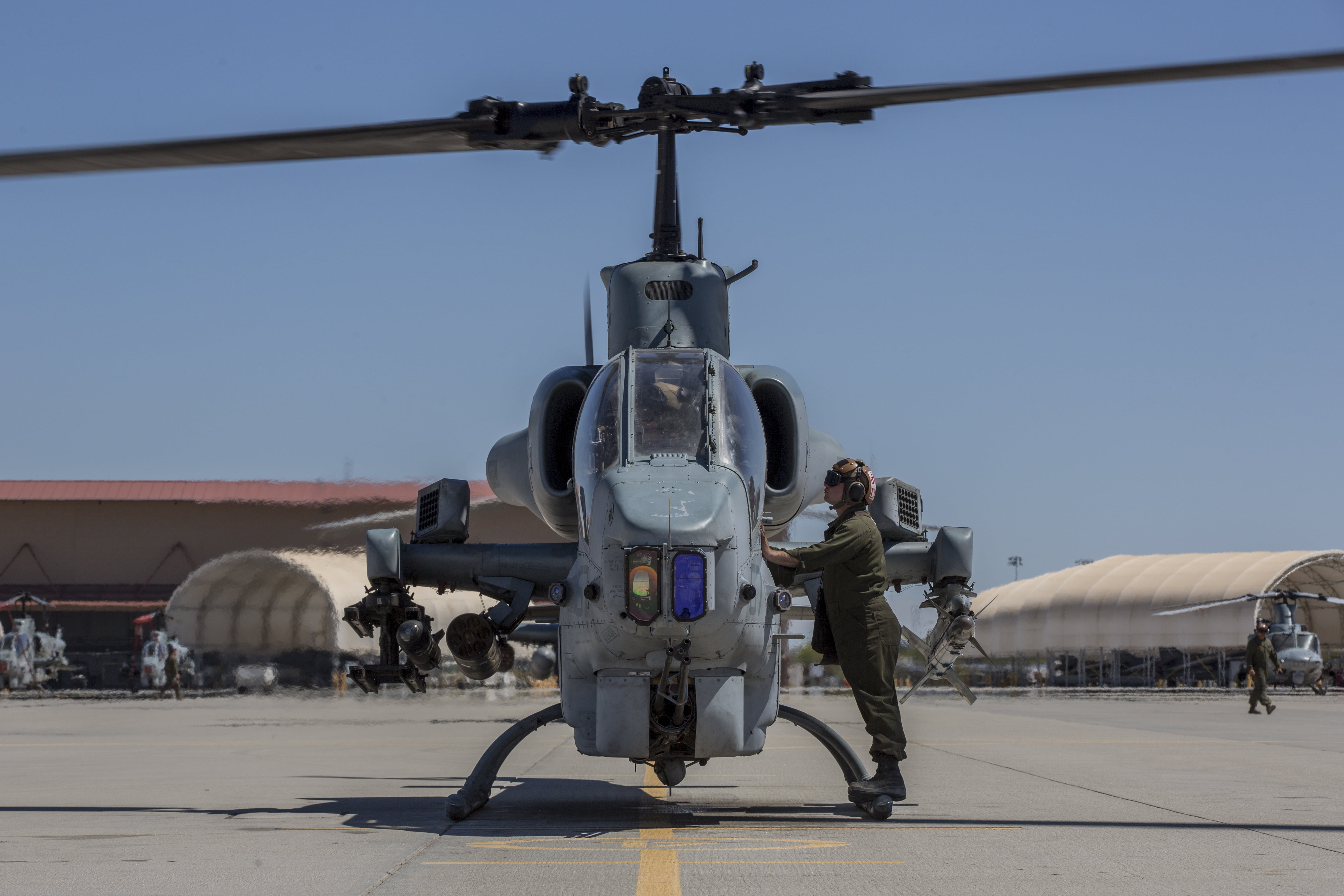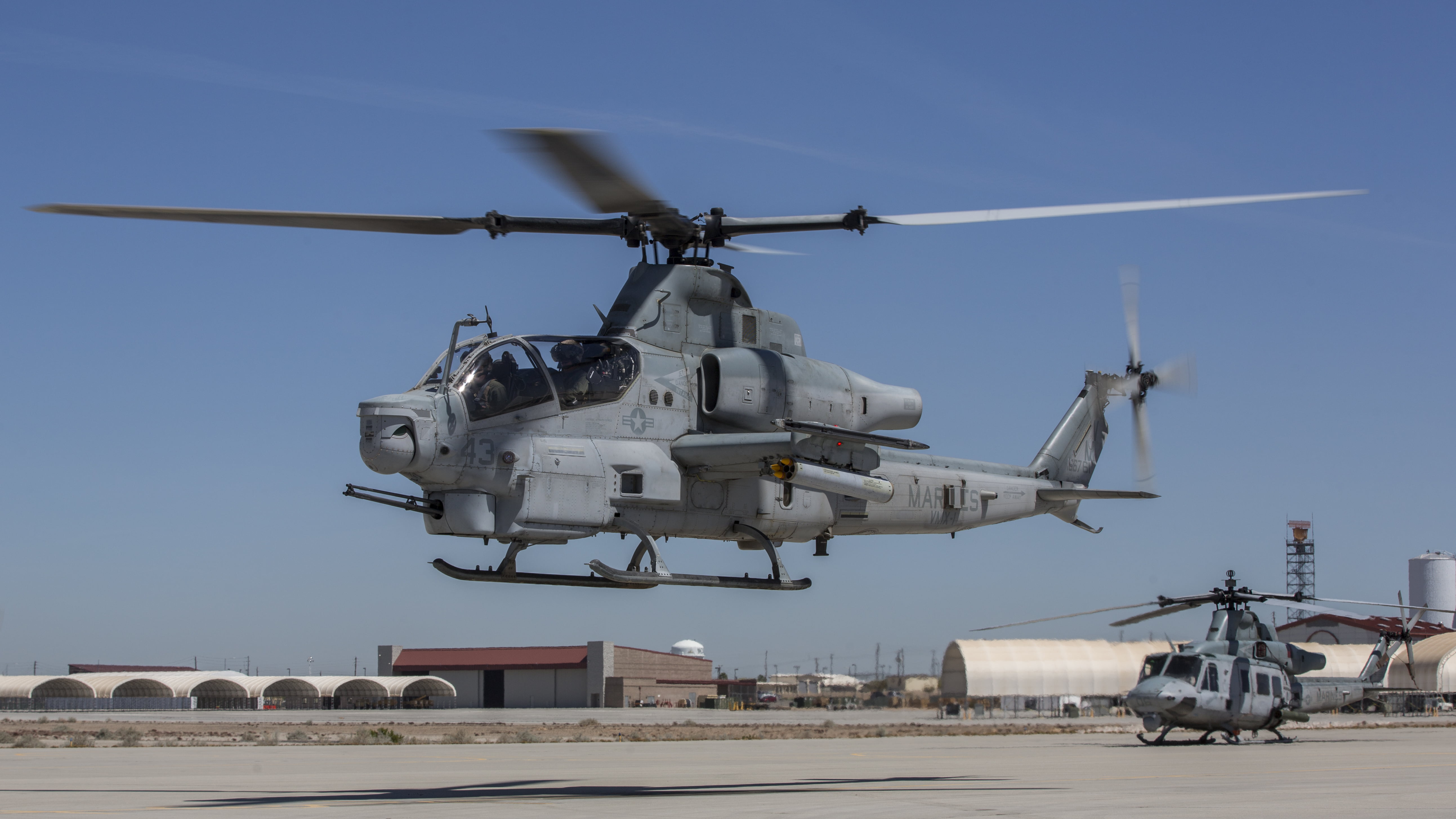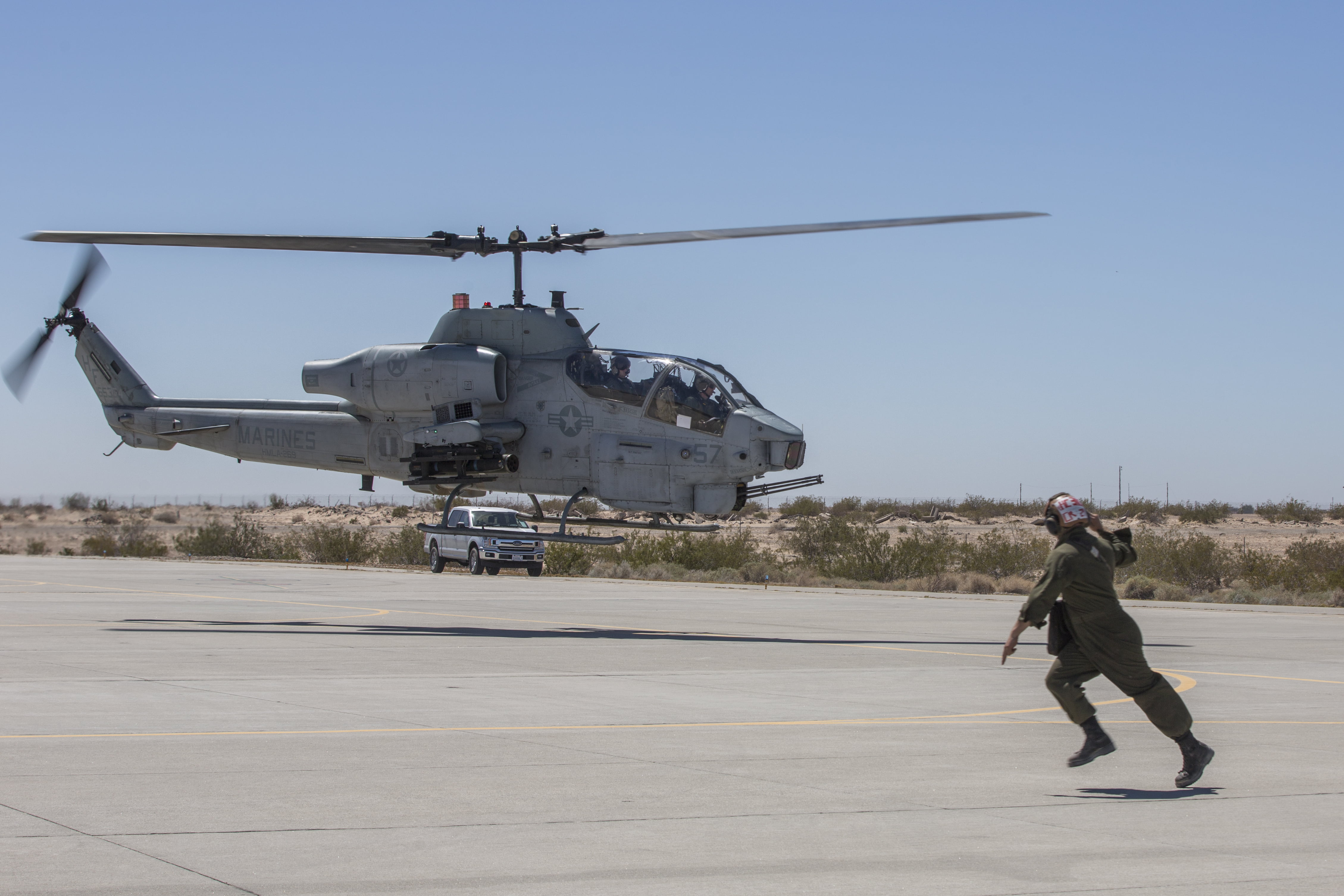By Robbin Laird
My recent discussions with Major Thomas Duff and Mr. Michael Manifor, HQMC Aviation, APW-53, Attack and Utility Helicopter Coordinators, about the Viper maritime attack helicopter provided insights into how this asset is evolving as the MAGTF itself is being reshaped for its broader spectrum missions beyond the land wars, to maritime operations, and support for embarked Marines being inserted into various types of land operating bases, including distributed expeditionary bases.
The APW-53 leaders underscored that “the Viper contributes to the entire span of assault operations. Marines are inserted in places where they can influence the fight, and it requires synchronized assault support operations involving aviation assets to do it quickly and effectively.”
They emphasized as well that the two-man team in the Viper works closely with the Ground Combat Element and with their training and operational experience are an integrated part of the C2 process with the GCE commanders. As a result, “with the Viper crew you’ve got a dedicated fires team that lives, breathes, eats, and thinks ‘how do I destroy the target, and support the ground scheme of maneuver’.”
As noted in the last article, “the Viper is involved in the entire span of assault operations. Prior to an assault, they prep the battlespace, including doing armed reconnaissance. They support fixed wing aircraft in a deep air support role, and when the Ospreys and CH-53s advance to the objective area, they provide an air escort role. With Marines in the objective area, they provide direct ground support for ground movement working directly with the Ground Combat Element.”
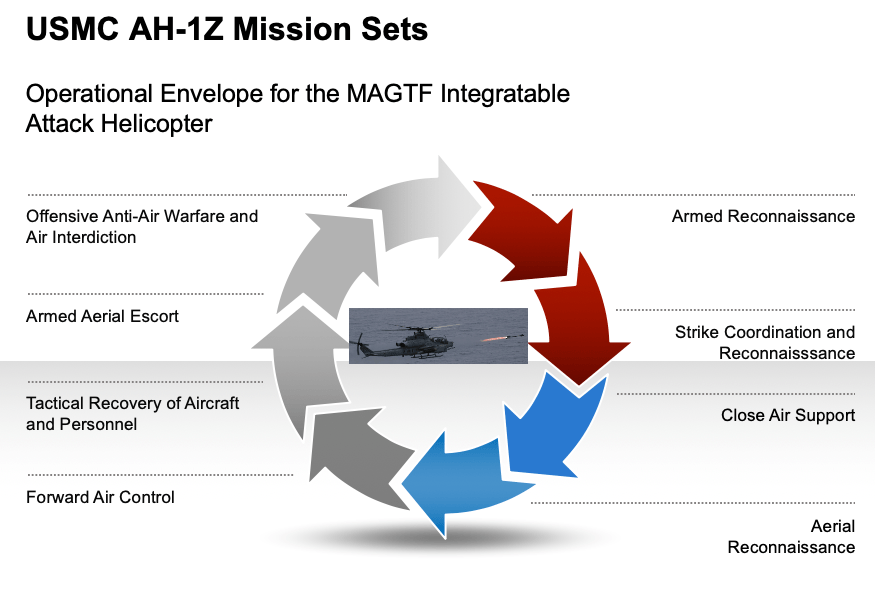
What I am going to do in this article, is to look at the organic systems on the Viper which allows the 2-man crew to be able to deliver this wide-ranging mission set, and then to highlight how the additions coming with the digital interoperability upgrades allow the Viper to expand its capabilities to both contribute to the fight and to pursue an integrability con-ops which allows it to play an even broader role within the evolving maritime domain.
The baseline NAVAIR chart of what is currently on the Viper provides a catalogue of the systems onboard the aircraft, but by discussing with the APW-53 team, these systems come to life in terms of how operators work with these systems to be able to be “involved in the entire span of assault operations.”
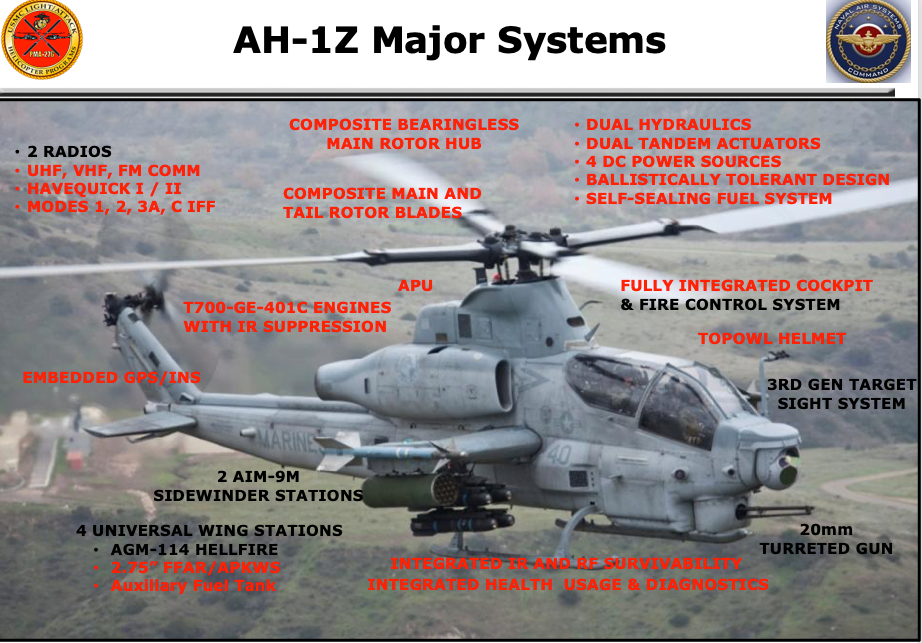
What follows is my interpretation of what I have learned about the systems onboard the Viper and how the Marines have used them and in the case of the impact of the digital interoperability upgrades, how they could be used in the return to the sea and enhanced priority on maritime missions.
The Two-Man Crew and Strike Capabilities
A good place to start is that this is an attack platform with two crew, each with their own cockpit, placed in a front to back position. Each cockpit with the exception of about a half dozen switches is essentially the same.
But in each cockpit, the Marines can fire weapons and do so in support of one another. The Marine aviator can fly and fight from either cockpit and can fight simultaneously from those cockpits. And they can track different mission solutions, such as an air-to-air mission for one, and an air-to-ground for the other.
The systems slide above refers to a fully integrated cockpit and fire control system. The sensors and the fire control system onboard the aircraft allow the two-man team to take on multiple targets using a variety of weapon systems simultaneously. In other words, the two-man teams have a flexible ability to use the onboard weapon systems because of the nature of the fire control system on the aircraft.
The fire control system is capable of tracking multiple targets which allows for efficient engagement. This can be especially useful against moving targets in the maritime environment,
With the upgrades coming soon via the digital interoperability initiative, the Viper through its Link 16 upgrade along with its Full-Motion video access upgrade, can have access to a much wider situational awareness capability which obviously enhances both its organic targeting capability and its ability to work with a larger swath of integrated combat space.
This means that the Viper can broaden its ability to support other air platforms for an air-to-air mission set, or the ground combat commander, or in the maritime space.
A key capability which the Viper has is its high-powered machine gun. Given that the Viper can easily land on virtually any ship which the Navy or MSC operates, it can bring its machine gun as well as its Hellfires, or its rockets with a laser seeker into the sea control domain.
The increasing threat from small boats and unmanned air vehicles or the coming threat from unmanned surface vessels highlights the importance of having a platform which can use a variety of strike capabilities to destroy these relatively low value assets with potentially a high impact on the fleet.
Unmanned assets may look smart, but when running into a machine gun, they return to simply being drones.
The combination of what the organic asset can do with its expanded span of SA and shared targeting information through the DI upgrades provides a new role for the Viper within the maritime force.
This role is inherent within its current configuration coupled with the DI upgrades.
The Weapons Onboard
The systems slide above highlights the organic weapons capabilities carried by the Viper.
The first is the M197 20mm turreted gun.
The Viper carries a three-barreled machine gun. for close-range (up to 2km) engagement and 750 rounds of ammunition.
“With the gun in a fixed-forward position, the pilot can aim by maneuvering the helicopter.
“Either crew member can slave the turret to the helmet-mounted sight and aim the gun by looking at the target.”
The second is the AGM-114 Hellfire. This missile provides a significant ground attack capability which has been used throughout the land wars, but also has a significant capability to strike maritime surface targets as well.
The Viper will soon (IOC FY20) have the ability to fire the Joint Air-to-Ground Missile (JAGM). This missile provides increased lethality through dedicated maritime modes, enhanced moving target capability, and selectable fuzing; providing capability against both fast attack craft and small surface combatants. Millimeter wave (MMW) guidance increases survivability by providing a true fire-and-forget capability, removing the requirement for a terminal laser.
The third are APKWS rockets which is a 70-millimeter rocket with a laser guided seeker.
According to its manufacturer, BAE Systems:
There are other precision-guided weapons on the market, but few consistently hit their intended target with pinpoint accuracy, while leaving minimal collateral damage. Our guidance section is designed to lock onto targets from over 3 kilometers away, keeping your aircraft and laser designators at a safe distance from threats.
Innovative by design, the APKWS rocket includes advanced DASALS seeker optics located on all four guidance wings. Once fired, the wings deploy, and the optics lock in, guiding the rocket to the target – delivering accuracy when it matters most.
- Wing slot seals protect optics from adjacent firings, sand, and moisture prior to launch to ensure no damage or debris inhibit the seeker from locking onto targets
- Optics lock onto moving or stationary targets in open or confined areas, supporting a wide variety of missions, and eliminating the possibility of a lost or uncontrolled rocket after launch
- 40-degree instantaneous field of regard enables a broad capture area for the rocket to adjust mid-flight and stay on track to its target
To date, 17 of the world’s most utilized rotary- and fixed-wing launch platforms are qualified with BAE Systems’ APKWS laser guided rocket system, including:
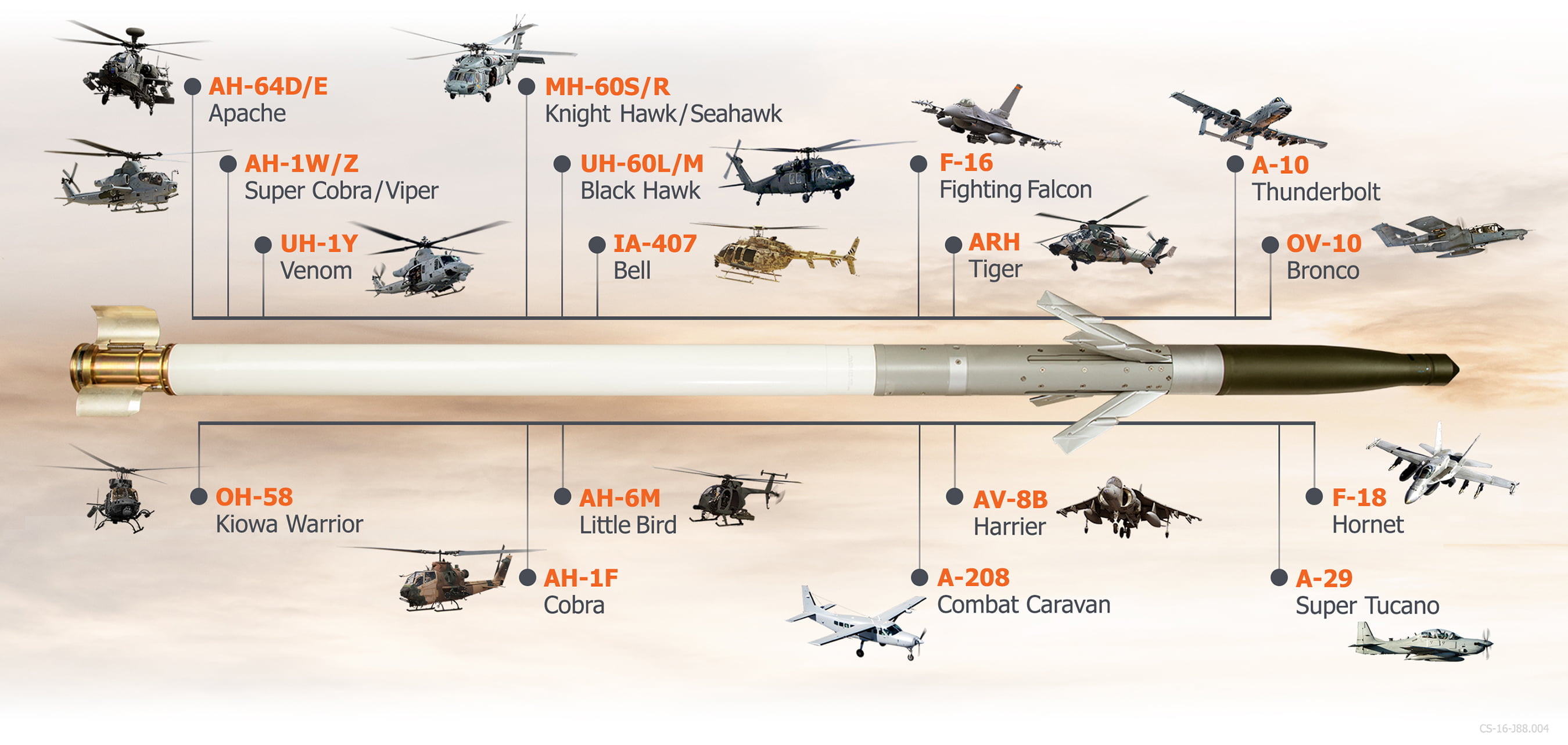
The fourth is an AIM-9M sidewinder.
This is a premier air-to-air strike missile, and is widely used by the United States and its allies in that role.
According to NAVAIR:
The Air Intercept Missile (AIM)-9 Sidewinder is a supersonic, short-range air-to-air missile developed by the U.S. Navy in the 1950s. Entering service in 1956, variants and upgrades remain in active service with many air forces after five decades. The U.S. Air Force purchased the Sidewinder after the Navy developed the missile at China Lake, California.
The Sidewinder is the most widely used missile the U.S. Armed Forces, employed on the Navy/Marine’s F/A-18A-D, F/A-18E/F, AV-8B, AH-1 and the Air Force’s F-16, F-15, F-22 and A-10 aircraft. Additionally, the Sidewinder is flown by over 30 international customers on over 12 different types of aircraft.
The missile’s main components are an infrared homing guidance section, an active optical target detector, a high-explosive warhead, and a rocket motor.
The infrared guidance head enables the missile to home on target aircraft engine exhaust. An infrared unit costs less than other types of guidance systems, and can be used in day/night and electronic countermeasures conditions. The infrared seeker also permits the pilot to launch the missile, then leave the area or take evasive action while the missile guides itself to the target.
And a story by Dylan Malyasov published on April 3, 2020, highlighted a recent USMC exercise which highlighted the Viper’s air-to-air warfighting capabilities.
A few months ago, the U.S. Marine Corps demonstrated the power of Viper attack helicopter through exercise “Viper Storm” that was held at Marine Corps Air Station Camp Pendleton.
The Viper Storm exercise took place in Southern Calif. Dec 11, 2019. The attack helicopters flew from two separate locations – one on the coast and one inland – and struck simulated enemy targets representing peer and near peer threats capable of denying naval and joint forces the freedom of navigation essential to maritime control and enhancing operational-level flexibility.
A feature of the exercises was the demonstration of the AH-1Z’s little-known capability to attacking drones, other helicopters – and, even fixed-wing warplanes.
The 12 Vipers employed AGM-114 Hellfire air-to-ground and AIM-9 Sidewinder air-to-air missiles, emphasizing the versatility the Viper provides. With larger stub wings than its AH-1W Super Cobra predecessor, the Viper can carry a combination of up to 2 Sidewinders, 16 Joint Air-to-Ground Missiles (JAGM) or Hellfires, auxiliary fuel tanks, and up to 76 rockets with various fusing options, including the newest Advanced Precision Kill Weapon System (APKWS) LASER-guided rockets. This allows the platform to be tailored to any mission whether it be sea, land, or air related.
The AH-1Z Viper is more lethal and survivable than its predecessor in large part because of the modernized ordnance, sensory, and communication equipment. For example, it can carry the JAGM, which will replace the Hellfire missile. The JAGM is a multi-sensor, aviation-launched, precision-guided munition for use against high-value land and naval targets. It provides precision point and fire-and-forget targeting day or night, regardless of weather.
The AH-1Z’s glass cockpit provides pilots with superior situational awareness and the upgraded Target Sight System has an incredible range that enables the Viper to detect and engage targets from distances not previously possible for Marine attack helicopters.
In short, the onboard weapons for the Viper provides a wide range of mission mixes which the aircraft can perform.
They range from air-to-air, to air-to-ground, from air-to-surface in a maritime domain provides a significant mission flexibility to which the aircraft can provide.
And because it is fully marinized, it can land and refuel with virtually any ship operating in the fleet, which means it can contribute to sea control, which in my view, is a mission which the amphibious task force will engage in with the expanded reach of adversarial navies.
See also, the following:
Note: U.S. Marine Corps AH-1Z Viper attack helicopters are seen in the video below firing Hydra 70 Rockets and M197 20mm Cannons at ground targets during a close air support exercise (CASEX) at Mt. Barrow, Chocolate Mountain Aerial Gunnery Range in California. Filmed on October 6-8, 2015.
Film Credits: Sgt Daniel Kujanpaa, Sgt Juanenrique Owings. October 10, 2015.


